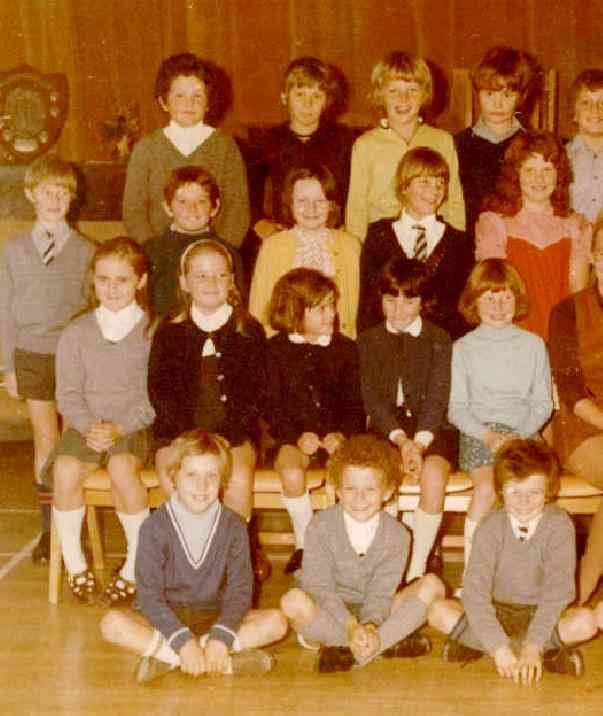
Figure 1.--This English primary school did not require a uniform, but many mothers have selected uniform items for the boys, but not for the girls. The photograph is undated but looks like the 1970s. |

|
We notice that at some primary schools which did not have uniforms that mothers sent their boys to school in uniform farments anyway. This seems to have been less common for their daughters who went to school in a variety of dresses. We notice this in the 1960s and 70s. We are not sure how common it was. The school portrait here (figure 1) is a good example of this. We are not yet sure how common this was, but we have noted it at a number of schools. Note that all of the girls are still wearing dresses.
Many of the images obtained by HBC have been acquired with no provinance. Thus we do not what the dress regulations were at this school. We do not think that the school required the boys to wear a uniform and not the girls. We do believe that this school rquired the boys to wear short trousers and the girls dresses. I do not know if the school have any specific regulations about the type of shorts worn. The boys here are wearing school shorts, not play shorts. The reason we think that the school did have rules is all the girls wear dresses and all the boys wear shorts. Normally unless there were some riles, not all the boys would have worn shorts--most perhaps but not all. We are less sure about the girls. In the 1960s and early 70s most girls still wore dresses or skirts to school.
A British reader tells us, "As far as this image goes - it could be that some mums have dressed the boys up for the school photo or that the school is in the process of changing from having a uniform to not having one - the boys here could be still wearing their own or their older brothers'clothes that had been the uniform the year before and their mums would want the clothes worn - people didn't just throw out clothes then if they were still wearable.As far as girls go, going on what I can recall from friends of mine who had sisters and from my cousins in Yorkshire,I think mums thought as long as they were wearing a dress they looked smart enough but boys should wear a proper shirt and tie for best (and for some that meant school too even if it didn't have a uniform).Even at schools with a uniform for all - like my primary school - it was more liberal for girls - for instance they could wear a frock without a tie in the Summer with any colour sandals and they could wear tigh! ts in the Winter."
Another British reader writes, "I only just found out that there is more to
the photo when I clicked on it. It seems that quite a few of the girls also seem to be in some sort of uniform as well as some boys and wondered if this might be a mixed group of two schools – like I say we visited a couple of times with a non-uniform school. Mind you – I suppose there'd be two teachers in the photo then. Anyway – just a thought. I suppose you could speculate forever on these things. Like you say – there are quite a few class photos where only one or two boys are in a “traditional uniform” so it probably is their mums choice. By the way – this change to non-uniform by some schools was a very late 60s/early 70s thing but a lot went back to uniform in the 80s and 90s as even primary school children were starting to get competitive as far as wearing
fashionable clothes were concerned and it was causing trouble in the schools. Now most schools have uniforms again – part of a school identity thing as they tend to “sell” themselves to parents – but more like sweatshirts in the school colours and grey trousers (for boys and girls!)."
Another British reader writes, "This picture looks to me like it is a school
affiliated to a church and funded partly by the church and the county education authority. It might be a school linked to a church. Looking at the picture I
think there was a school uniform. Two boys are wearing it grey shorts, tie and shirt. I believe that schools in the state sector could have a school uniform but it was obtional and no one can enforce the children parents to send their children to school fully kitted out in the uniform. In this case the boys wear the the shorts but only a couple wear the tie and shirt and the girls wear a dress.
I think this is a church school. County primary schools tend not to have uniforms." HBC note: It is possible that this is a Church related school, but most of the Church schools we have noted had stricter uniform requirements.
A British reader tells us about his and other London proimary schools in the late 1960s and early 70s, the time we believe this photograph was taken. He reports schools with a wide range of approaches to schoolwear. Some schools had strict uniforms and others let the children wear what ever they wanted.
Related Chronolgy Pages in the Boys' Historical Web Site
[The 1880s]
[The 1930s]
[The 1940s]
[The 1950s]
[The 1960s]
[The 1970s]
[The 1980s]
Related Style Pages in the Boys' Historical Web Site
[Long pants suits]
[Short pants suits]
[Socks]
[Eton suits]
[Jacket and trousers]
[Blazer]
[School sandals]
